#a river runs through it 1992
Explore tagged Tumblr posts
Text

#movies#polls#a river runs through it#a river runs through it 1992#a river runs through it movie#90s movies#robert redford#craig sheffer#brad pitt#tom skerritt#brenda blethyn#edie mcclurg#requested#have you seen this movie poll
56 notes
·
View notes
Text

h a p p y b i r t h d a y
Craig Sheffer
23 April 1960
🎈🎈🎈
[pic: sheffer as norman maclean, a river runs through it, 1992]
#happy birthday#actor#craig sheffer#born on this day#film#a river runs through it#a river runs through it 1992#robert redford#character#Norman Maclean
1 note
·
View note
Text
MCU Timeline: Black Widow
1970s - Early 1980s - Melina Vostokoff is cycled through the Red Room (four times).

1980s - Alexei Shostakov serves as the Soviet superhero Red Guardian.
December 3, 1983 - Natalia Alianovna Romanova is born.
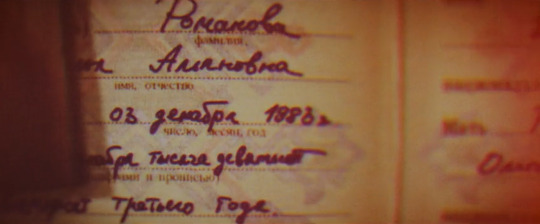
Note: In CA:TWS, Zola said Natasha was born in 1984, so it's not entirely clear which year is correct. Considering she looked older than 10 in September 1995, and the fact that CA:TWS was a mess in terms of dates, I'd go with 1983.
December 1983 - 1984 - Natasha is selected through a program to assess the genetic potential of infants and taken from her family.
1984 - 1990s or 2000s - Natasha's biological mother is looking for her.
1989 - Yelena Belova is born.
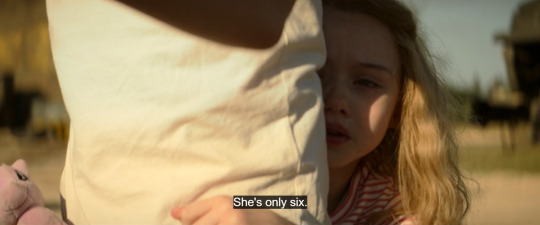
1992 - the last time Alexei Shostakov was on a mission as the Red Guardian.
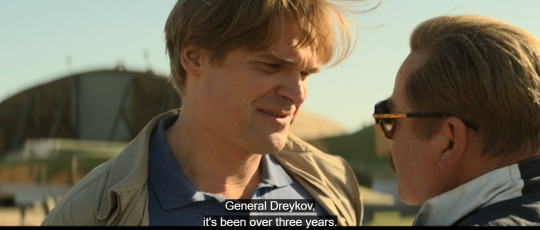
1992-1995:
Natasha, Yelena, Alexei and Melina play family in Ohio.
The "Parents" infiltrate the North Institute (a front for S.H.I.E.L.D./Hydra scientists working on mind control techniques as part of the Winter Soldier program).
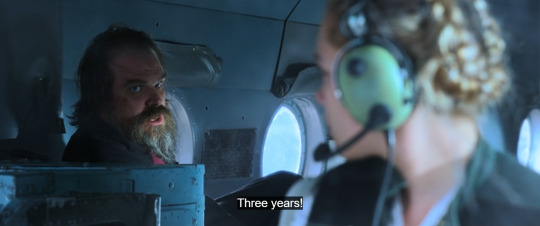
~September 1995:
Alexei steals data from S.H.I.E.L.D./Hydra and burns down the North Institute. They leave the States and fly to Cuba.
Girls are sent to be trained as spies and assassins.
Dreykov throws Alexei in prison for life.

1995 - Early 2000s:
Natasha undergoes training in the Red Room and becomes the Black Widow.
Natasha's biological mother is killed on Dreykov's orders.
1995-2016 - Melina perfects mind control for the Red Room using stolen data.
2000s:
Natasha takes part in KGB missions all over the world.
Yelena is used as a child assassin.
2008:
Natasha defects to S.H.I.E.L.D. after meeting Clint Barton.
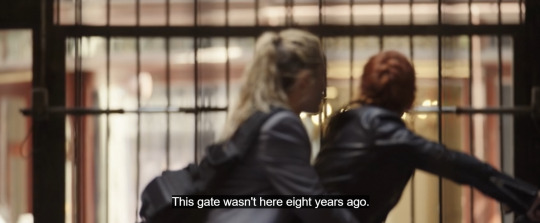
As the final step in this process, she blows up General Dreykov and his daughter Antonia in Budapest. For the next eight years, she believes he is dead and the Red Room is gone.
Next 10 days - Natasha and Clint hide from Hungarian special forces, including 2 days in a subway ventilation shaft.
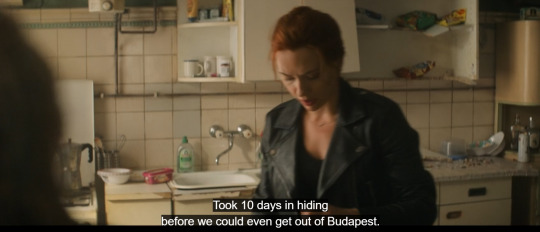
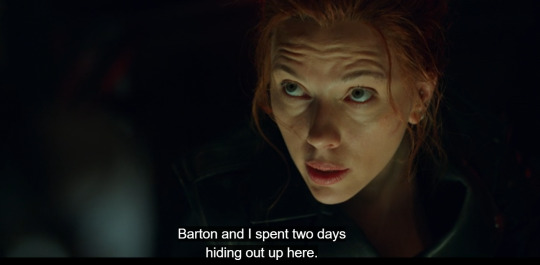
Antonia survives, and her father turns her into a weapon - an operative Taskmaster.
After Natasha's escape, Dreykov begins using chemical subjugation on his agents to prevent anyone else from getting out.
The main events take place in May 2016.
First days of May:
Yelena is freed from mind control while hunting former Black Widow Oksana in Morocco. Oksana, mortally wounded, asks her to free the others with vials of Red Dust. Yelena defects from the Red Room.
With Mason's help, she hides in a safe house in Budapest.
Through him, Yelena sends Red Dust to Natasha.
May 4:
Natasha aids the Rogue Avengers at Leipzig/Halle Airport, attacks T'Challa, and goes on the run from Ross, who places her on an international wanted list.
~Night - Secretary Ross has another heart attack and a second (presumably) triple bypass surgery.
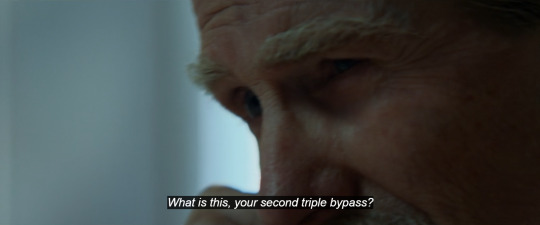
Note: it's probably Tony's fault.
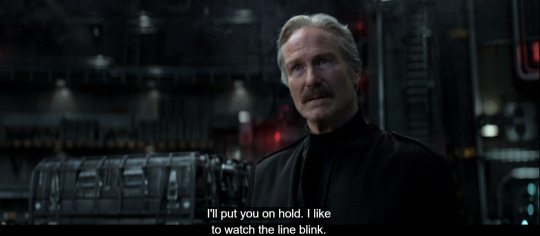
~May 5-7 - Natasha is in the US. She leaves her suit and tracker at the train station and heads back to Europe.
~May 8, 8:50 am (US)/2:50 pm (Norway) - Natasha tricks Ross on her way to Norway and gets rid of her phone.

Why May 8th: Here's the thing - we don't know when Ross's heart attack happened. But since he wasn't monitoring Tony after Raft, I'm guessing it was the same night of May 4th-5th or May 5th. It takes 3 days to start walking after artery bypass surgery. So we have to assume it was at least May 8th. More than a few days would also be weird since Natasha was on the run, not on the crawl.
~5 pm - Natasha buys groceries and arrives at a mobile home in the Norwegian wilderness, where she finds Mason, who has brought her fake IDs and mail from the safe house in Budapest.
~11 pm - the power goes out in the mobile home, and Natasha goes into town to get fuel for the generator, taking the vials with her in the trunk.
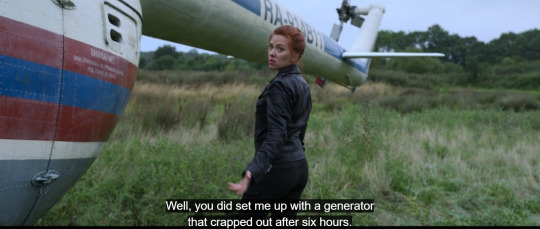
She is attacked by Taskmaster, who is looking for the vials. They fight. Taskmaster defeats Nat by throwing her into the river, but she manages to take the vials.
~May 11:
Natasha comes to Budapest.
Why 3 days later: 1) The train ride from Budapest to Norway takes about 2 days. 2) She split her lip during the fight with Taskmaster, which had already healed by the time she arrived in Budapest (takes at least 3 days). 3) The bruises on her body turned purple (takes 2-5 days after they appeared).
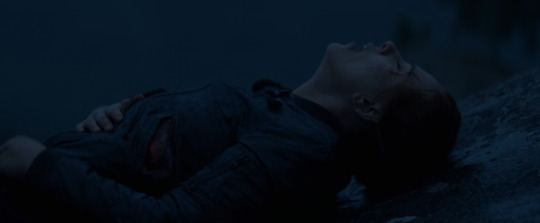
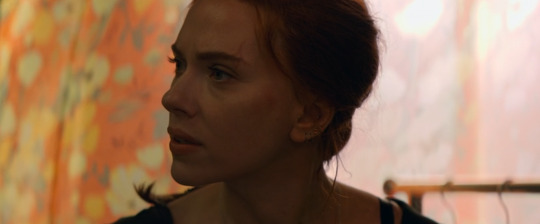
She arrives at the safe house and meets Yelena. They then fight, but end up in a truce.
Natasha learns that Dreykov is still alive and the Red Room still exists.
Natasha and Yelena are attacked by mind-controlled Black Widows.
Before they could use Red Dust on one of the wounded Widows, she was killed remotely by Dreykov.
Natasha and Yelena are pursued by Taskmaster until they reach the same ventilation shaft that Natasha and Barton hid in 8 years ago.
Evening - Nat and Yelena decide to destroy the Red Room and kill Dreykov. For real this time.
Natasha orders a jet through Mason.
~May 13:
Yelena and Natasha arrive in Russia.
Mason gets them an old Russian helicopter.
Why May 13: The drive from Hungary to Russia takes ~20 hours. They left at night and could only arrive the following evening. They met Mason in the daytime, that is, the next day.
~May 14:
Natasha and Yelena arrange Alexey's escape from prison in Russia.

F*ck up time: here we go again - snow in Russia in mid-May. I could say "okay" if we were talking about Oymyakon, but it's very far from St. Petersburg, and from the distance they could fly with this helicopter. On the way back they only had fuel for ~100 km of flight. This means that this prison had to be very close to the city. But it definitely wasn't, if our eyes are to be believed. There are no such frozen mountain places around St. Petersburg.
They head to St. Petersburg to find Melina, but they run out of fuel before they reach their destination, so they walk the rest of the way.
Evening - family reunion. They come to Melina's house outside the city.
Melina alerts the Red Room.
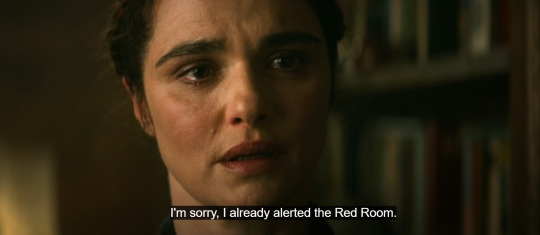
Alexei put on his Red Guardian suit (Melina had kept it all these years).
The fake family drinks vodka and argues. Melina tells Natasha the truth about her parents.
10 pm - Melina tells Nat she alerted the Red Room. They create a plan and Melina tells Nat how to defeat Dreykov. Natasha and Melina "switch bodies."
~10:12 pm - Dreykov's agents arrive and take everyone to the Red Room.
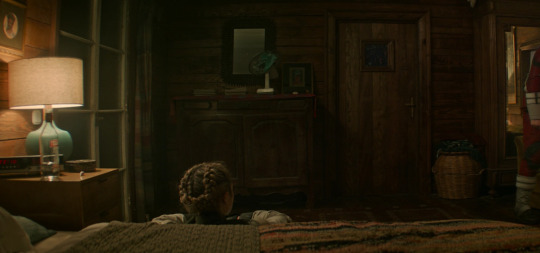
~May 15:
1:35 am - Natasha, disguised as Melina, comes to Dreykov's office and activates her tracker, allowing Ross to find her.
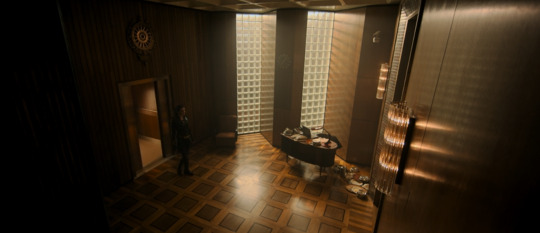
The Red Room surgeons prepare Yelena for a craniotomy so that Melina can dissect her brain while Yelena is still alive.
Alexei and the real Melina, in the guise of Natasha, wake up in the Red Room cells on level zero.
Dreykov exposes Natasha.
Melina, Alexei and Yelena escape.

Dreykov reveals that Taskmaster is his daughter, who survived the explosion. He sends her away and is left alone with Natasha.
Alexei fights Taskmaster. He and Melina manage to put her in a cell.
Dreykov prevents the activation of the landing protocol and shows Natasha the console from which he controls all the Black Widows.
Natasha breaks the pheromone lock preventing her from killing Dreykov and attacks him.
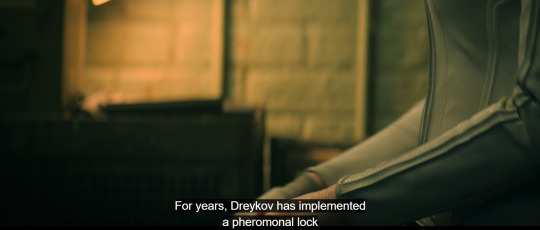
Melina destroys the Red Room's engine and the structure goes on an (un)controlled crash.
Black Widows attack Natasha.
Yelena blows up the vials, exposing the Black Widows to the Red Dust.
Natasha downloads the Black Widow database.
She frees Antonia from the cell.
Yelena kills Dreykov, Natasha fights Taskmaster.
After sunrise, somewhere in eastern Russia, few time zones away from St. Petersburg - Natasha, Yelena, and Antonia land. Natasha exposes the latter to the Red Dust.
Family gathering. Yelena gives Natasha her vest with many pockets. Natasha gives her a mission to free other Black Widows around the world.
Yelena, Melina, Alexei, Antonia and the freed Widows leave. Natasha surrenders to Ross, who has arrived. She then escapes from his car.
Late May (3 days before the next date) - Mason travels through 6 different time zones to get a quinjet for Natasha.
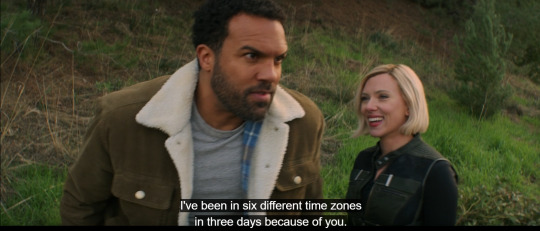
2 weeks after the termination of the Red Room, last days of May/first days of June 2016 - Natasha, dyed white, finally receives the Avengers jet from Mason and flies to help Rogers organize the Rogues' escape from the Raft.

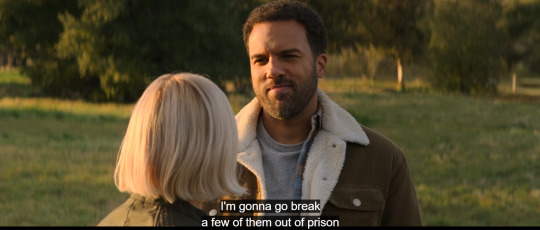
I can't imagine how he didn't melt in those layers of clothing in the summer.
2016 - May 2018 or late 2023 - early 2024 - Yelena adopts a dog, Fanny.
Late 2023 – Early 2024 – Natasha Romanoff receives a tombstone in Ohio.
Late April/Early May 2024:
Yelena visits the gravesite on her holiday.
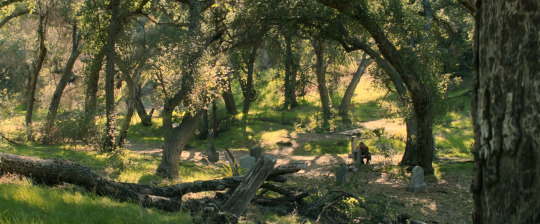
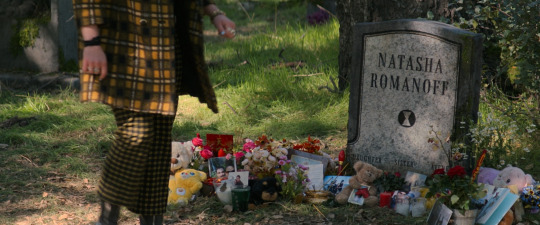
Valentina Allegra de Fontaine comes too and gives Yelena her next target - Clint Barton.
MCU Timelines: Phases One and Two
#marvel#mcu#black widow#natasha romanoff#mcu timeline#yelena belova#alexei shostakov#red guardian#melina vostokoff#taskmaster#thaddeus ross
55 notes
·
View notes
Text

"Exuma, the Obeah Man, was born in Cat Island and christened as Tony McKay. He grew up on Canaan Lane, off Shirley Street, Nassau, Bahamas.
Drawing on the traditional Bahamian folk songs, the infectious beat of Junkanoo, ring play, myths and linguistic idioms, Exuma, through his musical recordings, performances and paintings, has promoted Bahamian heritage and extended Bahamian music throughout the world more so than any other contemporary Bahamian recording artist.
Exuma left The Bahamas in the early 1960s to study architecture in New York. After running out of money, Exuma started to perform around New York during the rising sentiments against the war in Viet Nam. Soon thereafter, Exuma started to perform, using Bahamian rhythms in the Greenwich Village folk scene.
In the village, Exuma often performed along with Bob Dylan, Richie Havens, Peter Paul and Mary, Jimi Hendrix and Barbara Streisand at the Café Wha on Third and McDougal Streets, Café Bizarre on McDougal Street and Café Bitter End on Bleeker Street — all in Manhattan, New York.
Exuma landed his first major recording contract with Mercury Records, which released two albums by him: ‘Exuma, the Obeah Man’ and ‘Exuma II’. Later, Exuma signed a recording contract with the Kama Sutra/Buddah label, which released four albums by Exuma: ‘Reincarnation’, ‘Snake’, ‘Life’ and ‘Do Wah Nanny’, and the single, ‘Bam Bam’. In pursuit of artistic independence, Exuma established his own record producing labels, Nassau Records, through which he released ‘Rude Boy’ and ‘Going to Cat Island’.
In the early 1970s a song from Exuma’s first album entitled ‘You Don’t Know What’s Going On’ was used on the soundtrack of the movie ‘Joe’ that starred Peter Boyle and Susan Sarandon.
Exuma’s compositions and arrangements are also very much in demand by other top artists. For example, Nina Simone recorded three of Exuma’s compositions: ‘Obeah Woman’, ‘22nd Century’ and ‘Dambala’. Also, Jimmy Castor Bunch recorded Exuma’s compositions ‘Bam Bam’ and ‘Do Wah Nanny’. Many contemporary Bahamian recording artists, including Eugene Davis and the National Youth Choir, have recorded and performed many of Exuma’s compositions, such as ‘Going To Cat Island’, ‘Exuma, The Obeah Man’ and ‘Bam Bam’.
As a performance artist, Exuma has carried the unique Junkanoo sounds in his arrangements and pictures of Bahamian cultural life, folklore and myths in his lyrics to the major concert halls of the world. Exuma has performed at Avery Fisher Hall in New York, opening the show for Patti LaBelle; at the Bitter End Club in New York City with Curtis Mayfield; he opened for Rita Marley at the New Orleans Jazz Festival and at the River Boat President; toured with Peter Tosh; performed with Toots and the Maytals at the New Orleans Jazz Festival; opened many times for Sly and the Family Stone, Bush, Spirit, Steppenwolf, X and Black Flag.
Between the years 1978 through 1991, Exuma performed each year at the New Orleans Jazz Festival and regularly performed and toured with the Neville Brothers.
In 1974 Exuma was invited by the Queen of Holland to perform for her with the Edwin Hawkins Singers. Under the patronage of the then Prime Minister of Jamaica, Michael Manley, Exuma was invited to perform in Jamaica in the National Arena in 1975, where he was invited to record a reggae album, under the direction of Clancy Eckles, in collaboration with some of the leading Jamaican recording artists. In 1982 Exuma was invited to perform at the Nancy Jazz Festival in Nancy, France, along with the Neville Brothers. Exuma’s contribution to Bahamian and Caribbean music was recognized by Her Majesty Queen Elizabeth II in 1978 when she awarded him the British Empire Medal. Exuma is also the recipient of The Bahamas Tourism Award.
As a self taught painter, Exuma paints in oils scenes of everyday Bahamian life – children shooting marbles in the yard, a man on the dock enjoying a kalik beer, etc. In 1992 the Baltimore Museum authenticated Exuma as a folk artist. His paintings have been exhibited in 1990 at the Key West Lucky Street Gallery in Florida, in 1990 at the Piccadilly Restaurant, Parliament Street, Nassau, Bahamas and in 1993 by Antonius Roberts at the Bay Gallery, Bay Street, Nassau, Bahamas. Exuma’s paintings have been purchased by many art lovers, including the well known movie director, John Demme, director of Silence of the Lambs. Exuma conveys the mystique and beauty of Bahamian life as stunningly in painting as in song. A Bahamian visionary, humanistic philosopher and people’s poet, Exuma gives expression to the beauty and power of the cultural life of The Bahamas — the people’s every day experiences, folklore, myths, stories, Junkanoo, rake ‘n’ scrape, pain, joy, struggle and survival.
In the late 1980s, he suffered a heart attack in New Orleans. Bahamas Tourism Officer Athama Bowe recalls visiting McKay in hospital. "His skin was coated with olive oil and candles were burning all over the room for 'the sperrits'. He was mixing modern medicine with Obeah."
Exuma spent most of his time writing songs, painting, and fishing, living in both Miami, Florida, and in the childhood home his mother had left him in Nassau. He died peacefully in his sleep in 1997."
33 notes
·
View notes
Text
IWTV Musings - LDPDL & Nosferatu 2024 (Pt6b: Loustat & Thorlock)
I've been in my Louis = Ellen bag for the past few IWTV/Nos24 posts, since they're the main characters & main love interests of their vampire lovers. But I've been dying to sink my teeth (shut up) into the Louis = Thomas parallels of it all. And not even really cuz of Nos24.... But cuz of Nos79.

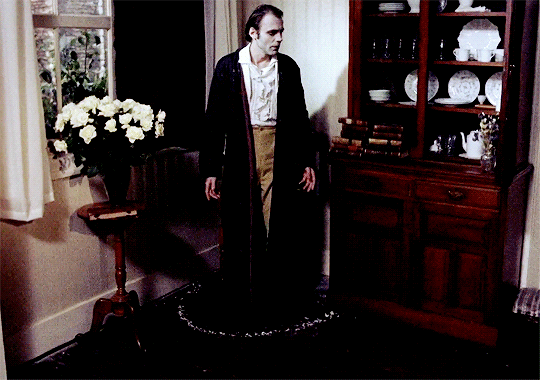
Fun fact: In Werner Herzog's 1979 Nosferatu, Jonathan Harker/Thomas Hutter is actually turned into a vampire by Dracula/Orlock.
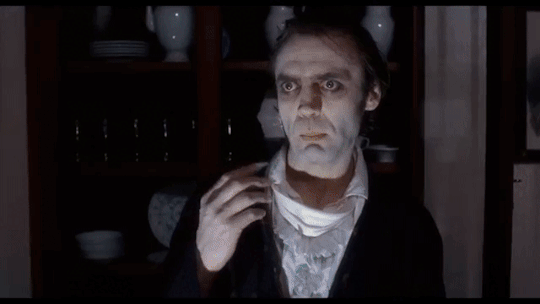
AMC's Interview with the Vampire is the first time in a major project that the physical bond between the vampire MALE antagonist and human MALE protagonist is played straight (LOL), and the vampire's lover/prey is actually turned into the vampire's lover/companion; rather than escaping the vampire's clutches alive & human (Jonathan/1922!Thomas)--let alone staying human but dying/sacrificing themselves to kill the vamp (Ellen); or losing their vampirism once Dracula's dead to become human again (1992!Mina).
But Herzog planted the seed for subverting/inverting the Dracula formula: For the female gothic protagonist, she dies, sacrificed & martyred with the Christian religious salvation arc as the power of innocence/virtue defeats the Devil/Dragon ("Dracul"). But the male gothic protagonist is run ragged, loses everything/everyone, and succumbs to the monster/Beast lurking inside him; perpetuating the vampire curse and joining the Damned, not the Saved.


The homoerotic undertones of Dracula/Orlock's dynamic with Jonathan/Thomas have long been established (x x); since everyone knows the vampire bite/exchange of bodily fluids = penetration/sex. But because of late 19th/early 20th century homophobia, bisexual subtext was all they could get away with back then. But real talk, Jonathan/Thomas should count as one of Dracula's Brides, too (even if he is sometimes/technically the "bait/surrogate" for the real love interest Mina/Ellen, a la Lucy).
Dracula & Jonathan
In Coppola's 1992 Bram Stoker's Dracula, Jonathan has the (in)famous orgy with Dracula's Brides; but Dracula swoops in, furious at them for taking what's his.



Then Dracula carries Jonathan to his bedroom & undresses him. 👀

And Jonathan is so discombobulated that it's like he's been roofied & date-raped in a black-out. 👀👀
The next time we see Jonathan, he's desperately making his escape from Dracula's castle, absolutely covered in bite marks. And if the Brides had been ordered to stay away from him, then that means Dracula's been FEASTING on Jonathan every night. Dracula lets Jonathan escape, but not without a final bit of petty spitefulness, using telekinesis to push Jonathan off the ledge and fall into the river. The trauma of everything Jonathan's gone through DOES physically transform him--not as vampirism, but as age, where his black hair has gone grey from the mental AND physical stress. He's in this liminal state b/t life & death, as he's gotten old prematurely cuz of his encounter with the supernatural--Dracula's still left a permanent mark & changed him.
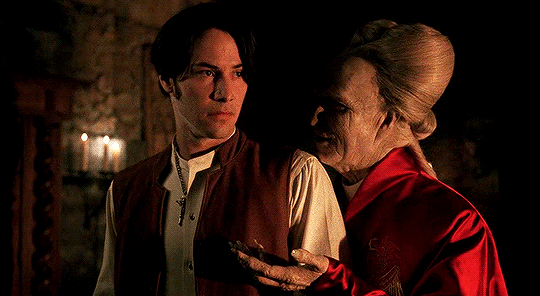
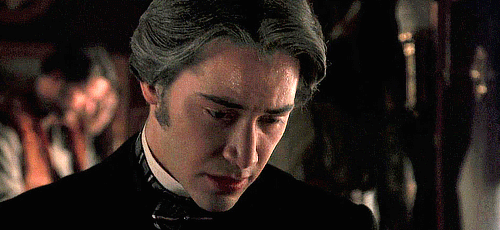
Orlock & Thomas
Robert Eggers' Nosferatu 2024 is WAY more in-your-face about Thorlock's sexual dynamic, where he explicitly swaps Thomas & Ellen in & out as Orlock feeds on him. Orlock gives him hallucinations of Thomas having sex with Ellen, as Orlock makes Ellen have dreams of her having sex with Orlock--when really it's Orlock feeding on Thomas... while butt naked & humping/thrusting against Thomas.

Not to mention, the scene with Thomas discovering Orlock's coffin is the ONLY time we see Orlock in full frontal nudity, the peen just on display--phallic imagery being something Eggers often insists on having in his homoerotic films (a la The Lighthouse). Orlock's not ERECT when he COMES Out of his coffin for Thomas, but the STIFFY'S a close call--

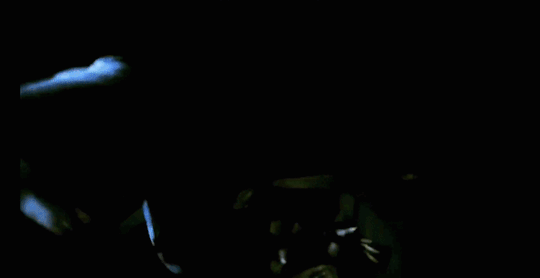
--alright I'll stop. 🍆🤦😅
24!Thomas doesn't become a vampire, and he doesn't go grey, but Thomas IS still physically affected/traumatized by Orlock--in his own desperate escape from Castle Orlock, Thomas (also bitten up, though this time we KNOW it was by Orlock) slips & falls into the river, and breaks his leg. For the rest of the movie, he's hobbling around all over the place, and it slows him down so that he can't even make it back to Ellen in time before the sun rises & she & Orlock die.
But the 1979 version takes things way more literally. 79!Jonathan/Thomas is stalked & seduced in a manner not unlike Lucy/Ellen's, as Dracula/Orlock is drawn to him just as strongly.

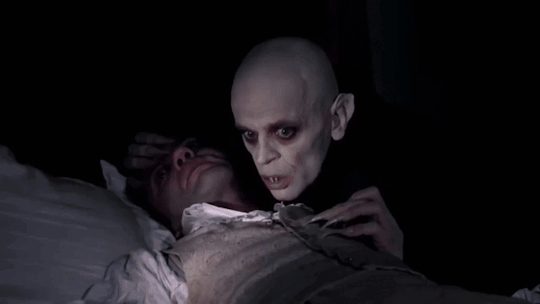
Lucy/Ellen is killed by Dracula/Orlock's bite, but Jonathan/Thomas survives--forever; becoming the next Nosferatu to carry on the vampiric legacy of death & destruction.

Casper, Kent, and Susan Linville. “Romantic Inversions in Herzog’s Nosferatu.” The German Quarterly 64, no. 1 (1991): 17–24.



IMO the connection b/t Louis DPDL and Jonathan/Thomas is most interesting in 1979 Nosferatu, cuz although Louis is THE Mina/Ellen (female-coded in everything but biological sex), he's also turned into a vampire like 79!Jonathan/Thomas, which no other version does.
So extra kudos to AMC's Rolin Jones for going the distance to take the homoerotic subtext and truly make it TEXT--not just wrt to Anne Rice's Vampire Chronicles universe, but the larger Dracula/Nosferatu universe she was inspired by. 👏🏳️🌈

#interview with the vampire#nosferatu 2024#louis de pointe du lac#bram stoker's dracula#dracula#lgbt#lgbtqia+#iwtv tvc metas
7 notes
·
View notes
Text
William Hootkins in the 1990s (2 of 3)
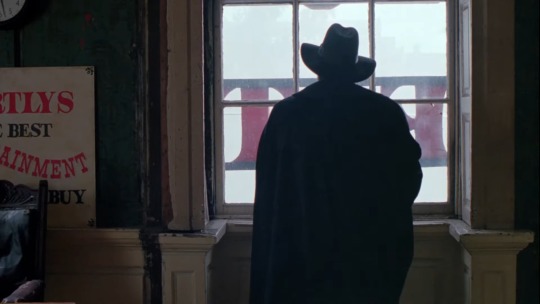

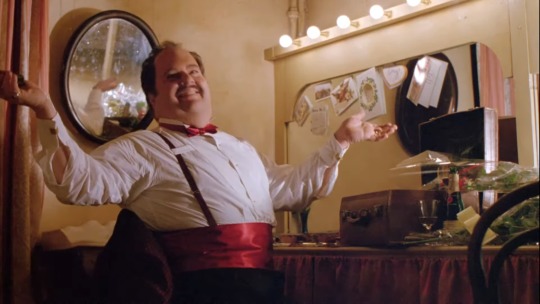

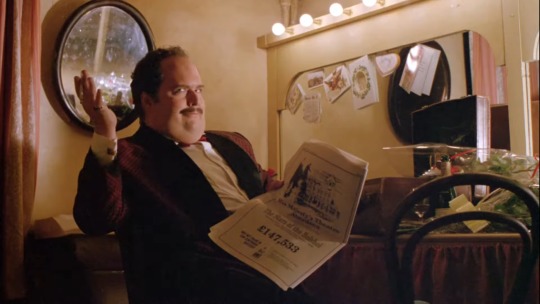
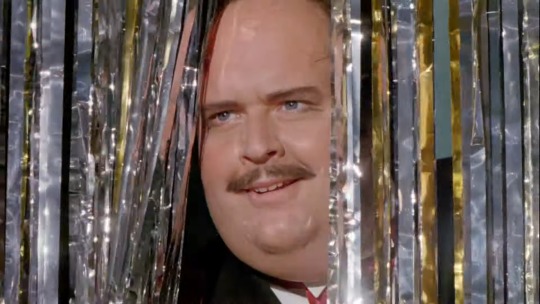
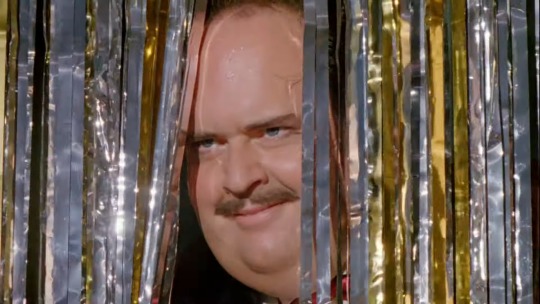

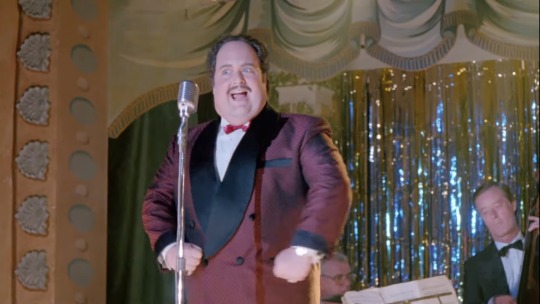
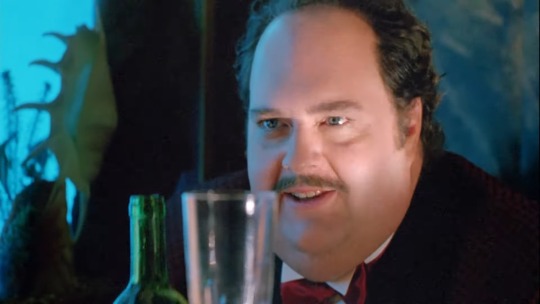
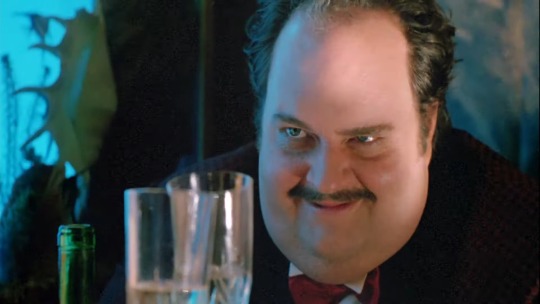
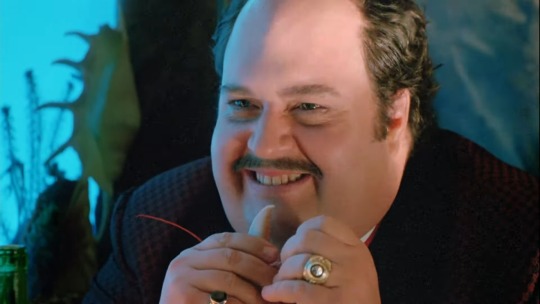
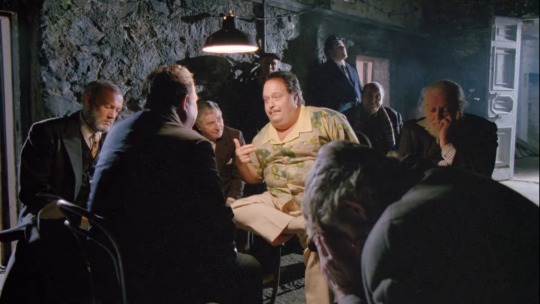
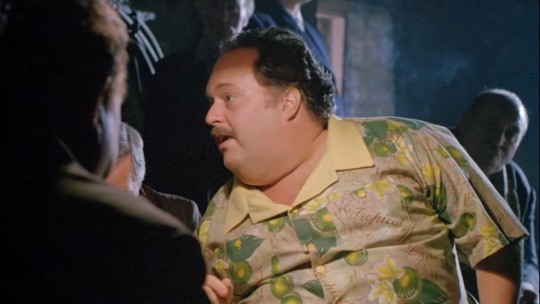


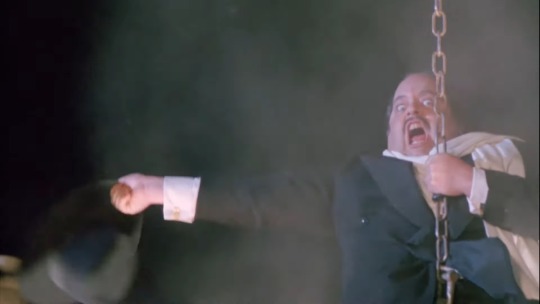
In late 1991, William Hootkins had a major role in Hear My Song by rookie co-writer/director Peter Chelsom. It is a fun film and Hootkins looks like he had a ball while doing it.

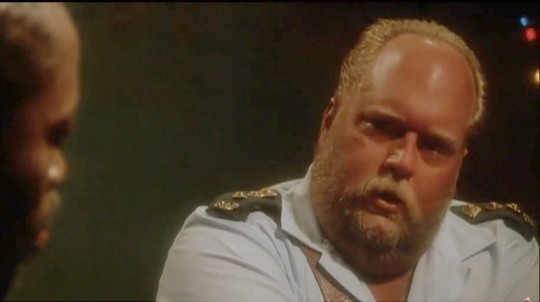
In 1992, Hootkins did another film with Hardware writer/director Richard Stanley, Dust Devil. I haven't seen this film either.

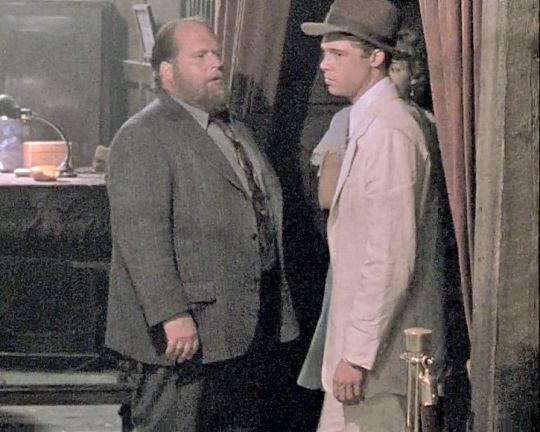
Also in 1992, William Hootkins appeared in major motion picture A River Runs Through It with Brad Pitt.
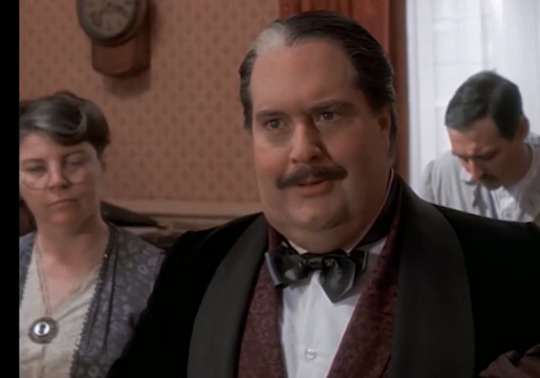
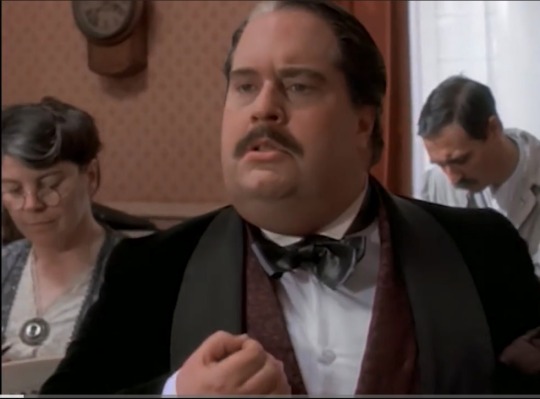
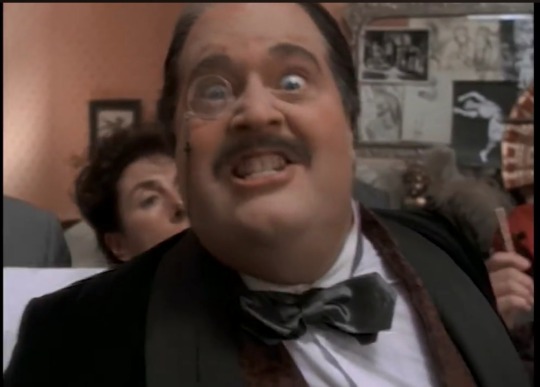
Hootkins also appeared in an episode of The Young Indiana Jones Chronicles.


In 1993 Hootkins appeared in UK TV movie Age of Treason.
#William Hootkins#sexy fat actor#1990s#actor born in us and living in uk#Dust Devil+#A River Runs Through It#Hear My Song#Age of Treason#The Young Indiana Jones Chronicles: Barcelona May 1917
28 notes
·
View notes
Text










Bow River Pathway, Calgary (No. 3)
The Centre Street Bridge is a historic bridge in Calgary, Alberta, crossing the Bow River, along Centre Street. The lower deck connects Riverfront Avenue in Chinatown with Memorial Drive, while the upper elevated deck crosses Memorial Drive as well, reaching into the community of Crescent Heights.
Centre Street Bridge is the central point of the quadrant system of the city.
It was built by The City of Calgary in 1916 for $375,000. It replaced the MacArthur Bridge, a steel truss bridge built in 1907 by a land developer called the Centre Street Bridge Company Limited. The MacArthur Bridge was destroyed by a flood in 1915. Centre Street Bridge was designed by John F. Greene, and features an upper and lower deck, cantilevered balconies on the upper deck, and four large cast concrete lions atop two pairs of ornamental concrete pavilions flanking each end of the bridge. The lions were cast by Scottish mason James L. Thomson. They were modelled after the bronze lions by Landseer at the base of Nelson's Column in Trafalgar Square, London. The pavilions are ornamented with symbols of Canada and the United Kingdom: buffalo heads, maple leaves, shamrocks (Ireland), roses (England), and thistles (Scotland).
The upper deck, a reinforced concrete arch structure, spans 178 meters (584 ft) and is 15 meters (49 ft) wide. The lower deck, an "I" girders structure, runs for 150 meters (490 ft) and is 5.5 meters (18 ft) wide.
The Centre Street Bridge was listed as a Municipal Historic Resource for Calgary in 1992.
The bridge went through extensive restoration in 2001, when it was closed for one year. The lower deck is configured with reversible lanes. The original lions were replaced with replicas after considerable debate. Local legends of adjacent Chinatown hold that the lions would come alive after dark and roam the city streets. One of the original lions is now located at City Hall, the remaining three were placed in long-term storage. In April 2013, a city committee voted unanimously to place the remaining lions at one or more of the new West LRT C-Train (tram) stations. In 2018, one of original lions was repaired, conserved and is now displayed in Rotary Park. The remaining two lions are in storage to protect and preserve them for foreseeable future.
Source: Wikipedia
#Centre Street Bridge#Bow River Pathway#Prince's Island Park#Bow River#Calgary#Alberta#Canada#summer 2024#travel#original photography#vacation#tourist attraction#landmark#cityscape#architecture#landscape#nature#urban park#skyline#flower#flora#bridge#trail#tree#river bank
13 notes
·
View notes
Text


There is no escape—we pay for the violence of our ancestors. -Frank Herbert, Dune, 1965
Introduction
A long time ago in a place called Olympia, Washington, there were a bunch of anarchists, just like today. However, back around 1999, there were certain anarchists of Olympia who enjoyed targeting nasty, ecocidal institutions, burning down ski resorts, freeing captured animals, all that wonderful stuff. Not every anarchist in Olympia was doing this, obviously, but it was fun to know it was happening. Likewise, not every anarchist in Olympia had read the sci-fi novel Dune by Frank Herbert, but those who had were in for a real treat, because the best friend of the late Frank Herbert, a poet named Bill Ransom, was a local Olympia professor who was often found at local Olympia literary events.
This might be heresy to say, especially in an article predominantly about Dune, but the trilogy that Frank Herbert and Bill Ransom wrote together, a trilogy which doesn’t even have a proper name, is far superior to the Dune novels. Beginning with The Jesus Incident, the two friends created a colonized world called Pandora (sound familiar?), and on this world, not only is the native life psychotically hostile to the human colonizers, the entire planet, including its plants and animals, posses a singular consciousness. Like the Dune novels, this trilogy examines and dissects both power and religion, but it’s far more kind in its depictions of the guerrilla eco-rebels, those who fight in league with the conscious kelp forests of Pandora. Again, while this might be heresy, Frank Herbert teaming up with a poet certainly made the books much easier to read, and prettier.
I first got to Olympia around this time, when the super-fun anarchists were still burning things down, and not only was green-anarchy in the air, not only was deep-ecology a sort of de facto baseline, but having Frank Herbert’s buddy around to discuss ecology and guerrilla warfare with was definitely a treat. Beyond all that, Bill Ransom had served as a humanitarian medic during the civil war in El Salvador, and beyond suffering PTSD from what he experienced, he didn’t talk about guerrilla war lightly, to say the least. Thanks to him, I didn’t just learn all of the above, I was first introduced to the weird literary matrix that existed up there in the woods of Western Washington.
Without getting too academic, just imagine a bunch of bored, laid-off white male lumberjacks sitting in their shitty hut with no electricity and no television. Keep in mind, this is the mid 20th century we’re talking about, so in these shitty little huts lit up by kerosene lamp and wood-stove, these fools read a bunch of books in their rainy boredom, and through this they accidentally got real smart, so smart they started holding their own literary readings at local logger bars. And then suddenly, unseen by the rest of the world, working class poets and writers were brawling at readings over things like style and form, inventing their own weird school of writing in the process.
I don’t know what you’d call this school, but you probably heard of one example, the 1976 book A River Runs Through It, which became famous after Brad Pitt starred in the 1992 movie version. While that story takes places in Western Montana near Missoula, a lot of people don’t realize that’s the same bio-region as Olympia and Seattle, ecologically speaking. To make it more intense, most people don’t know Idaho is between Montana and Washington.
Anyway, the list of while male Pacific Northwest authors goes on, with famous names like lumberjack Ken Kesey of Oregon and his 1962 novel One Flew Over The Cuckoo’s Nest, another movie people might know about. This one’s important, because most of this literary school were white guys, and here we see a prime example of how obsessed they were with the local indigenous, given Cuckoo’s Nest is narrated by Chief Broom. Another example is Raymond Carver, the acclaimed short story writer who was born in Oregon, lived his last days in Port Angeles, Washington, and had several films based on his work. On the other side of the northern Olympic Peninsula is Port Townsend, and it was here that Frank Herbert and his wife Beverly settled down in 1972, living on a farm while Frank began writing Children of Dune, the book that catapulted him to stardom.
Frank Herbert was already famous at that point, and the cash from Dune and Dune Messiah allowed him to not only move to Port Townsend, but to give up his day jobs of teaching and journalism. When he was writing the first draft of Dune from 1959 to 1963, his wife Beverly became the main provider for their children. Luckily for them, the first draft of Dune was serialized in the sci-fi magazine Analog, bringing Frank Herbert nearly $3,000, and when the final version of Dune was published in hardcover in 1965, the author was paid just over $7,000. This was a lot of money for Frank, who grew up around Tacoma, Washington living in a shitty hut where he chopped his own wood, smoked his own salmon, and rowed his canoe in the Salish Sea with his indigenous friend.
Frank Herbert was very much part of this white-male-centric literary movement of the Pacific Northwest, and his Dune was published just as all their stars were rising. So now that you know a bit about Herbert’s literary background, it’s time for me to depersonalize this text a bit and officially present to you An Anarchist’s Guide to Dune.
#Dune#dune movie#dune books#film review#book#books#frank herbert#pnw#pacific northwest#pop culture#sci fi#science fiction#cinema#movies#films#anarchism#anarchy#anarchist society#practical anarchy#practical anarchism#resistance#autonomy#revolution#communism#anti capitalist#anti capitalism#late stage capitalism#daily posts#libraries#leftism
4 notes
·
View notes
Text

A River Runs Through It Robert Redford, 1992
2 notes
·
View notes
Text
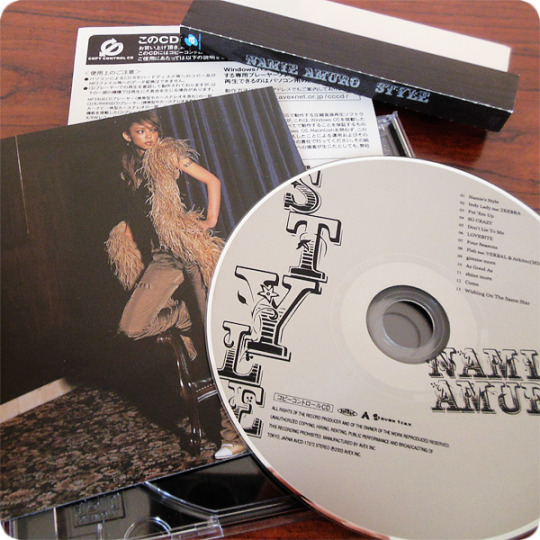
20th Anniversary
Namie Amuro: Style (2003.12.10)
There are at least four distinct eras in Namie Amuro's career: 1) her initial debut with the idol-ish super eurobeat/dance group SUPER MONKEY'S (which spawned the group MAX) from 1992 to 1995, 2) her major debut as a solo artist with Avex Trax in 1995, kicked off by the single "Body Feels EXIT," through to the height of her popularity as a leading figure in the J-pop industry alongside producer Tetsuya Komuro until her abrupt hiatus in 1997, 3) the awkward, not-very-well-received comeback and transition to post-TK R&B, which saw the lowest sales numbers of her career, and lasted roughly until the release of Queen of Hip-Pop in 2005, and 4) her meteoric rebound, transition back to dance-pop, and the cementing of her status as a legend, until the abrupt announcement of her retirement in 2017. There are a lot of mini-moments within these eras, and many parts overlap so that it's not exactly seamless, but that's the gist of it.
While Namie's comeback was one of the rarest in music history, the factors that led to the initial nadir are just as interesting and numerous. For one, she had squandered the goodwill of the public by engaging in activity that was frowned upon in Japan at the time: she hooked up with a backup dancer, got pregnant, got married, got tattoos, and got divorced, all within the space of a couple of years. On top of it, Namie's success was tied to that of her producer, the mega-popular and prolific Tetsuya Komuro, who was basically running a personal empire in the 1990s. While Namie's popularity and success was never due solely to the music he was writing for her, it was an enormous contributing factor to her sales numbers. TK's brand of pop was the defining style of the 90s, with no one better able to pry open wallets in what was the CD format's most lucrative era. But just as quickly and completely as he ruled hearts and charts, his music fell out of style, also as a result of several factors (mostly the rise of singer-songwriters and R&B/hip-hop in the mainstream, and personal issues involving everything from tax evasion, to drug rumors and a wild romantic life). Namie teaming up with him again for her immediate comeback never stood a chance against so much drama. So major changes were made when Namie ditched the Komuro baggage, taking the plunge with new support -- Dallas Austin, m-flo, ZEEBRA, even Teddy Riley -- into the world of R&B and hip-hop.
This brave step didn't immediately produce amazing results: if anything, Namie's early forays proved lackluster and indecisive on albums like GENIUS 2000. It wasn't until 2003's STYLE that she finally and fully committed to the change. Gone were the days of chasing the chance and dreaming that she was dreaming, Namie was now putting up her dukes, wishing on the same star, and shining more. The songs on the album were all heavily influenced by contemporary Western trends of the time, especially Black hip-hop, fashion, and culture. The early 00s was still the era of P. Diddy, Jennifer Lopez, Nelly, Busta Rhymes and Missy Elliott, and in some ways, STYLE samples sounds from all of these artists in different ways, with the inclusion of a few softer songs, such as "Four Seasons," "As Good As," and "Come," which were deliberately added for variety. But for the most part, the album is built on beats, bars, and rhymes. This was still a fairly new thing to see in the Japanese mainstream, and certainly by an Avex Trax artist -- for comparison, Ayumi Hamasaki had just released her rock opus I am..., while RAINBOW merely dipped a toe into R&B on a song like "Real me," Ai Otsuka was less than a year out from releasing LOVE PUNCH, Hikaru Utada was actually going softer and more art-pop with Deep River, and both BoA and Kumi Koda had just debuted in Japan with LISTEN TO MY HEART and affection respectively, which stayed squarely on the softer R&B/pop side of the fence. Only Crystal Kay, HEARTSDALES, and maybe DOUBLE were a step ahead of Namie, but I would argue that STYLE and Namie's involvement in projects like SUITE CHIC really let the sound transition into the broader and bigger Oricon mainstream, prompting a rash of copycat records.
Even so, STYLE did poorly. It still hit #1 in its first week, but it stands as Namie's least popular record with the fewest sales numbers to this day. It does, however, have something of a cult following by fans who now look back at the early 00s with nostalgia. Personally, I didn't like this album when I first heard it -- its lack of pop and dance music, which I was used to hearing from Namie, coupled with what seemed like a desperate bid for relevancy in a genre that I wasn't particularly interested in at the time, turned me off from spending much time with it. Nowadays, I dislike this album less -- there are songs on here that I actually really like. My only real caveat is that the album is split too abruptly at the halfway point between the bangers and the non-hip-hop tracks. In hindsight, STYLE is clearly Namie still getting comfortable in this milieu, and it's especially obvious next to albums like Queen of Hip-Pop and PLAY that were more successful at capturing something both influenced by hip-hop and unique to what only Namie could bring.
This CD album comes in a standard jewel case with an OBI and a booklet that features additional photos and lyrics. First press editions featured two exclusive bonus tracks: a remix of "SO CRAZY," and an alternate version of "Wishing on the Same Star." For me, this album is more interesting for what lead to it, what it lead to, and what it said about the state of Namie Amuro and J-pop at the time. It's not great, but it's not nearly as bad as I remember it being. Avex Trax, of course, would politely disagree, largely ignoring it on the career-summarizing compilation album Finally (only "SO CRAZY" represents). After something as tentative and a bit try-hard as this, the world was not ready for what was coming down the pipe with Queen of Hip-Pop, making that era all the more wild and magical.
Catalog Number: AVCD-17372
21 notes
·
View notes
Text

Pitt first gained recognition as a cowboy hitchhiker in the road film Thelma & Louise (1991). His first leading roles in big-budget productions came with the drama films A River Runs Through It (1992) and Legends of the Fall (1994), and the horror film Interview with the Vampire (1994). He gave critically acclaimed performances in the crime thriller Seven (1995) and the science fiction film 12 Monkeys (1995), the latter earning him a Golden Globe Award for Best Supporting Actor and an Academy Award nomination.
Pitt starred in Fight Club (1999) and the heist film Ocean's Eleven (2001), as well as its sequels, Ocean's Twelve (2004) and Ocean's Thirteen (2007). His greatest commercial successes have been Ocean's Eleven, Troy (2004), Mr. & Mrs. Smith (2005), World War Z (2013), and Once Upon a Time in Hollywood (2019), for which he won a second Golden Globe Award and the Academy Award for Best Supporting Actor. Pitt's other Academy Award nominated performances were in The Curious Case of Benjamin Button (2008) and Moneyball (2011). He produced The Departed (2006) and 12 Years a Slave (2013), both of which won the Academy Award for Best Picture, and also The Tree of Life (2011), Moneyball, and The Big Short (2015), all of which were nominated for Best Picture. Alongside George Clooney, Pitt is one of two actors to have won Academy Awards for both Best Supporting Actor and Best Picture.
3 notes
·
View notes
Text
Saturday 21st December 2024
Fraser Island/ K'gari
The alarm clock agitated at 6.15 and we were instantly awake for today's adventure. We had to present ourselves at the tourist information place in Urangan to be herded by bus to River Heads port to catch the early morning ferry to K'gari, the K being silent, leaving gari pronounced Gaary. (Fraser Island is a lot easier to articulate) Due to little research on my part, I was surprised at how large an island this was. In length, it is 123 km, 15 km wide, 22 km at its widest part; 1840 square kilometers in all. We were informed it was different from any island we are likely to have visited before because K'gari is made entirely of sand. Because of this, we were half expecting to pull alongside a giant sandcastle with a couple of paper flags at each end! Our tour guide put us right on this fallacy. I prefer, he said, to think of K'gari as a sand bank, not an island. If you imagine the last ice age, when sea levels were much lower, K'gari would merely have been a great big pile of sand attached to the rest of Australia, and the continental shelf would also be visible. The notion of how the sand was built up in the first place was put forward. It all began a long way away to the south of us here, in the Blue Mountains, to the west of Sydney. The wind blew, eroding and separating tiny particles of sand, depositing them into creeks, carried by rivers into the Pacific, where the longshore drift carried these sand particles north of Brisbane, forming this chain of islands. Today, K'gari is seen as the largest sand island in the world.
Now, some important advice from information gleaned from our last excursion experience that included a paid for lunch. 4 rules that you break at your peril and put you at risk of going hungry. 1. Assess the competition and position yourself at the front of the queue. There will be plenty of food. 2. Carry out a size assessment of the fellow eaters. Be sure to be in front of the people who appear to be the most familiar with large portions of food. Ergo, there will be more food available. 3. Take high value items; New Zealand green mussels, fish fillet (any sort), large lumps of chicken. (forget the legs), 4. Follow these rules, and you will be well placed for seconds.
Our tour firstly took us to McKensie Lake, which was indeed a curiosity because it was one of three lakes sat in pure sand! Afterall, sand doesn't usually hold water! This was an opportunity to lay on the sand by the lake before setting off for a boardwalk through rainforest. Between the years 1886 and 1991, loggers worked these forests on the island for their timbers: Hoop Pine, Kauri Pine, Turpentine, Blood Wood were some. This was big business, shipping timbers across to the mainland and processing them in Maryborough, yes of Mary Poppins fame. One large logging company was Mckensie and Sons, which dominated operations, even building railways to move these huge logs across difficult terrain. Then, in 1991, the federal government put a stop to the whole thing. They wanted UNESCO status as a world heritage site, and the price for this was to stop the logging. In 1992, UNESCO agreed and K'gari was granted what it wanted.
The east side of the island remarkably has approximately 80 km of flat tidal beach that our bus could drive along! Today, we probably covered 20 km of it, but often at speed. Our destination was the wreck of the SS Maheno, a steam packet that used to ply these waters and across to New Zealand in the early 20th century. 1935 came, and it was no longer cost-effective to run a steam ship, and our vessel was sold for scrap to a Japanese company who came and collected her. Deciding to tow her to the scrap yard rather than sail under power, both ships got into difficulties in a cyclone, resulting in the Maheno drifting and running ashore in the sand, where her hulk remains to this day. Now, a protected shipwreck, she will always be there rusting away. Great photography, though. We made our way back along the sands passing Coffee Rocks; ancient deposits of tree formations which break down leaving a coffeestain in the water, seeing the coloured sand cliffs and then to Eli Creek, a bit of a magnet for kids to play in the fresh waters flowing into the sea. Also, a magnet to the local population of dingoes keenly looking for a crafty meal either left by humans or foraged.
Then, it was back to the ferry and setting sail for Urangan and home. Fully fed, but weighing up whether a fish and chip supper might be required as a top-up. Another great day, tomorrow promises to be somewhat quieter.
We don't really like organised trips; being organised, conforming to a demanding itinerary, shuffling along with a whole load of other people, not being able to spend time on the parts that interest us, and not being able to skip or move on from areas that do not. It was a very long day, but we went places and saw things that we would not otherwise have had access to by our own resources. Therefore, it was well worth it, and the advice given was correct. This island, although by topography, was not remarkable, it was instead quite amazing and unique.
ps. We did stop off in Hervey Bay to get snapper and chips, but it was the third fish and chip we had tried before finding one that was open on a Saturday night beyond 7pm! What is the matter with these people? The one we did find open managed to stay open till eight! The rest of the Esplanade, the main entertainment area, was in darkness by then!
pps. We passed the Botanical Gardens at about 7pm, and we were somewhat surprised at the crowds queuing to get in. Then we remembered the Christmas lights display. And then we recalled it was nearly Christmas! A fact that to date that had escaped us!










2 notes
·
View notes
Text

if you’re hearing ARE YOU SATISFIED? by MARINA playing, you have to know SHERRI LOWE (SHE/HER; CISFEMALE) is near by! the THIRTY year old ACTRESS has been in denver for, like, SIX MONTHS. they’re known to be quite RUTHLESS, but being DRIVEN seems to balance that out. or maybe it’s the fact that they resemble CARLSON YOUNG. personally, i’d love to know more about them seeing as how they’ve got those GOLD STARS, UNFINISHED CONVERSATIONS, SHARP TEETH vibes. and maybe i’ll get my chance if i hang out around the RIVER NORTH ART DISTRICT long enough!
timeline. | credits. | wanted plots. | relationships. | nav. | playlist | pinterest.
name: sherri lowe
birthday: november 2, 1992 (30, scorpio!)
birthplace: philadelphia, pennsylvania
current residence: river north art district, artist alley apartments
gender: cis woman // she/her
orientation: closeted bisexual
occupation: actress / broadway star (in the making)
vocal type: mezzo-soprano (vc: taylor louderman)
face: carlson young
alts: anya taylor-joy, samara weaving, anya chalotra, brianne howey, lily james
tw: foster care, drug addiction, abandonment, repressed sexuality
from the mun: hi guys! I go by jess, I'm 26, she/her, from the EST timezone, and I’m really excited to be here! I’ll post a plot call on discord later, but also wanted to state on here for those who might not be in the discord that if you’re up for plotting and wanna plot with my girl, feel free to give this a like and I’ll hit you up!
philadelphia (1992-2010).
born and raised in philly with an absentee father and a struggling addict of a mother. desperate, broke, and thoroughly addicted, at six, sherri’s mother put sherri in foster care. promises were made to return when wealth and sobriety were secured. they were not kept.
relatively stable foster care placements moving forward. stayed with a successful yet young single woman til the age of 13, when she was placed back in the system after her foster mother got a once-in-a-lifetime opportunity out of the country and took it. placed with middle aged couple after that til she graduated. they were nice. warm. enough.
the trauma caked into her home life issues was never really dealt with by sherri. she found an outlet for it instead: theatre. she fell in love with movie musicals at an early age, but her love only grew when she started performing in stage productions. she eventually developed a goal: to be a star on broadway. and that goal became her driving factor.
deal with the trauma of having a problematic mother you loved give you up? nah, work your ass off to get the starring role in your school’s spring musical. deal with the fact that your second mother figure also left you behind instead of adopting you and taking you along with her on her travel opportunity? why do that when she had after school jobs to get done if she wanted to get anywhere after graduation!
sherri hustled her way through life, focusing on her goal and her future career while everything else fell to the wayside. sure, she had friends and boyfriends and went to parties and the like, but that was always secondary to her main focus. theatre came first.
new york (2010-2022).
by the time graduation came around, sherri had landed a shitty nyc job, booked a shitty apartment in queens, and had bid her foster parents goodbye. sherri threw herself into her work, positive her raw talent, looks, and hustle would get her to her dream in no time.
that didn’t happen.
for the next decade, sherri found herself in a cycle of either being unemployed or only landing ensemble and supporting roles in off-off broadway, off-broadway, and broadway shows. (full run down listed in her timeline & credits!) to make it more insulting, it wasn’t a linear cycle. she could go from a supporting role in a broadway show to an ensemble position in an off-broadway one to being unemployed (on stage) for years! the unconditional attention that thrilled her when she was her hometown’s star and sure to get leads only provided to make her more jealous and desperate when faced with equal competition. a lead role on a proper broadway stage seemed to be more and more out of her grasp.
in 2021, though, she thought she had made a big break. a new revival of rodgers and hammerstein's cinderella was coming to broadway. and sherri - when auditioning for the role of ella - ended up getting cast as ella’s understudy along with cast as a swing for a stepsister. this was the closest she’d been to getting on broadway as a lead, and she nearly burst with excitement at her prospects. granted, getting understudy wasn’t choice, but sherri figured that she’d likely get the lead when the star’s limited contract was up, and she’d probably get to star a few times when the star got sick or needed vocal rest or what have you - she could be patient. she’d waited this long.
she never got promoted. the show only ran for a year, leaving sherri to watch this ONE star have the health of a fucking horse from the sidelines. sure, once a week on wednesdays she took the lead so the lead actress could get vocal rest, and she was put in for the stepsister role frequently enough, but thats shit compared to being a proper lead.
when the show closed, she returned to broadway unemployment (and a waitress lifestyle) once again, brewing in bitterness and also Sexual Angst because of an event that occurred between the lead and sherri at the show’s cast party (see wanted connection: The Cinderella Incident). sherri was on a bitter, biting warpath with everyone she came into contact with for the next month.
meanwhile, she went back to work at her usual waitress gig. when she was not working on stage or screen, she worked as a waitress at a fictional diner called Starlight, a fictionalized knock-off of Ellen’s Stardust, it paid well and she got to sing to audiences all day, so she dealt with the tackiness of it all.
recent developments and colorado (2023—).
she found work again at the start of this year in a limited run of an off-off broadway play called “out of gas on lovers leap,” in which she played one of the two leads, myst. sherri was at a low. she loved the play and could relate to her character, but hated the step down it was for her in status. the show itself only ran for a month.
at it while she was at this low that sherri received a peculiar job opportunity from her agent: a starring role in a new television show currently in development called Curtains! It's a children's television show that draws inspiration largely from The Fresh Beat Band, following a group of fictional Broadway hopefuls who teach kids social lessons through song and dance featuring a theater backdrop.
five years earlier, sherri would have turned the role down outright. hell, a year ago she would have. it's a humiliating proposal. but with minimal prospects and her 30th birthday just behind her, sherri ultimately decided to accept the offer, if nothing else than for the networking opportunities it could provide her.
which brings her to coloardo. the show shoots out of colorado at an independent studio. the job pays her well enough that she doesn't need to maintain a secondary job just yet. she lives in the artist alley apartments in the rino district. and every day she has to go to work and sing a child's tune, she wants to stab someone. she's fine.
personality.
+ driven, daring, blunt, adventurous, passionate, independent, adaptable
- jaundiced, ruthless, desperate, selfish, competitive, vain, biting
stray inspirations.
aspirations: sharpay evans (hsm), tonya harding (i,tonya), robin scherbatsky (himym), rachel berry (glee).
insecurities: olivia mossbacher (the white lotus), lizzie saltzman (legacies), lauren cooper (faking it), bonnie plunkett (mom).
sexuality: petra solano (jane the virgin), nina sayers (black swan) quinn fabray (glee).
common themes.
second choice. sherri has a thing about being second choice. think the attitudes of caroline forbes or (better) lizzie saltzman towards their counterparts of elena gilbert and hope mikaelson, but not as blatant or vocal about it. her insecurities stem from her mother, who massively fucked her over by raising her for six years before giving her away. it was a fatal blow to her image of her self worth and self esteem (”why wasn’t I enough?”), that was only exacerbated by her first foster mother also giving her up, as well as her constant failures at earning roles of rank in her career. this has also led her to develop a need for attention, probably one reason why stardom appealed to her so much.
repression. because of her lackings in her professional and familial life, she has controlled her romantic life with an iron fist, but like, a chill iron fist, because her social and romantic life has always been on the back burner. however, every development in her romantic life has been controlled. when her friends started getting boyfriends in middle school, she picked one up with ease. when they started having sex in high school, so did she. because she did not care about this arena in her life, she had no doubts or fears in navigating it. she found picking up the (to her, limited) nuances of men to be easy, and thus never stressed in this arena. her romantic life was easy. until it wasn’t. during her time in new york, sherri experienced something of a sexual awakening with a woman that scared her shitless at the absolute chaos it would bring down on her life (see: The Cinderella Incident WC). it's not internalized homophobia, but rather a severe fear of a loss of control. the circumstances around her sexual awakening have allowed her to write it off, and her own need for control and simplicity in one area of her life has enabled her to return to the status quo (re: heterosexuality), and not acknowledge this at all.
envy. generally, sherri appears quite confident. in reality, she is! at least, until she sees someone do something better than she does, or earn something she wanted, or have something she doesn’t but thinks she should have. then the envy kicks in. she can feel this envy towards people she considers below her in status or above her, and in both instances these feels are accompanied by acts of pettiness and feeling the need to prove herself. also, if possible, her trying to take said object of envy for herself. consider olivia in the white lotus, trying to steal kai away when she finds out paula is secretly hooking up with him. that’s sherri; she’d do that if given the opportunity. she’s the desperate sort, lowkey, and when coupled with her envy and the sinking sense of her own failures, she’s willing to do just about anything to further her career or prove (to herself?) that she can succeed somewhere.
obsessed artist. at a young age sherri set her sights on greatness through theatre and she has spent her life working towards this goal. it stands above all else. in her craft, she aims for excellence. she’s a workaholic. she’s career-oriented. she has and will continue to put work above all else, and in a way this is her detriment. socially, she has made no real connections because she was always willing to throw it away if an opportunity arises to better her career. additionally, it is relevant to note that comparatively, sherri is successful. compared to others trying to break it on broadway, sherri has made it. it took her a couple years, but once she started booking shows, she’s been booked and busy (sans two one year gaps of nothing, rip). she’s been on the broadway stage as a member of the principal cast, she’s starred and performed on a number of different stages of different rank. she has played opposite of big names, is mutuals with them on social media - even now, she’s set to lead a new children's television show. other people in her position would be happy with the success they’ve had. but to sherri, it’s all a failure. her goal is to star in a broadway musical as the lead, and until that happens, all her other work is moot.
wanted plots.
sherri has lived in colorado for 6 month and in nyc for the last 12 years! I have both a wanted connections tag and a page (that I poured a lot of energy into so pls give it a look 😅 👉👈), and I'm open to any and all connections for her! wanted plots page. & wanted tag.
timeline. | credits. | relationships. | playlist | pinterest. | nav.
#chq;intro#★ — development.#okay finished my wanted page so I can post this now#plot call coming to the discord soon! <3
7 notes
·
View notes
Text
watching a river runs through it (1992) and i have a feeling I'm going to cry
2 notes
·
View notes
Text

a river runs through it, 1992
3 notes
·
View notes
Text










Jasper National Park, AB (No. 15)
The Jasper Park Information Centre National Historic Site, located in Jasper National Park, Alberta, Canada, is the primary visitor contact centre for visitors to the park. Sited in the Jasper townsite, it was built as the park administration building in 1913-1914, and became the visitor contact centre in 1972. It is located in Athabasca Park, which is not included in the National Historic Site designation.
The Information Centre was one of the first rustic style buildings to be built in a Canadian national park. Conceived by park superintendent Lt. Colonel Maynard Rogers and designed by Edmonton architect A.M. Calderon, it incorporates local materials and construction techniques. The design is unique. No two windows or doors are the same, and the different peaks of the roof were meant to remind a visitor of the surrounding mountains.
As built, it was a multi-purpose building. The ground floor was the park superintendent's residence and the park's administrative office. Upstairs, there was a library, a small museum and a drafting room. The basement included a fish hatchery. The building served as a landmark for arriving train passengers on the Canadian National railway line that runs through the park. The administration building was the prototype for future construction in the Jasper townsite, and influenced building designs throughout the Canadian park system.
In 1936 a separate residence was built for the superintendent. The fish hatchery moved out in 1941 to a site near the confluence Athabasca and Maligne rivers. The first park information centre was built in 1949 near the Canadian National line in front of the main building. In 1972 the information centre moved into the old headquarters. In 1988, the Jasper Park Information Centre was designated a Classified Federal Heritage Building and in 1992 it was designated a National Historic Site of Canada. The upper floor is used as office space
Source: Wikipedia
#Jasper Park Information Centre National Historic Site#A.M. Calderon#Rocky Mountains#Northern Rockies#Alberta's Rockies#travel#original photography#vacation#tourist attraction#landmark#landscape#summer 2023#Canada#woods#forest#flora#nature#countryside#fir#pine#Jasper National Park#UNESCO World Heritage Site#Yellowhead Highway#cityscape#architecture#Patricia Lake
15 notes
·
View notes